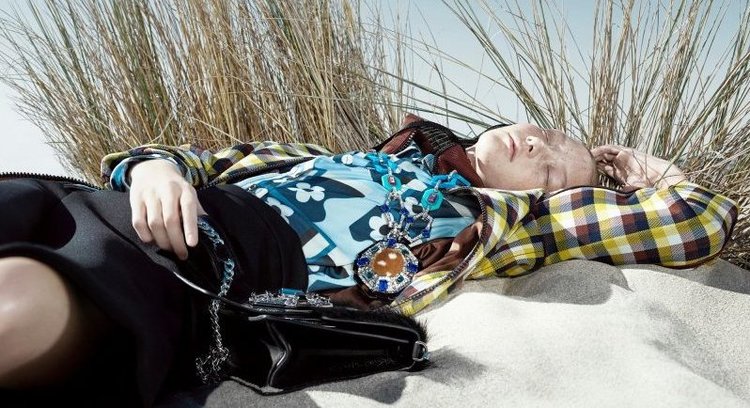Riposte | Prada’s €160 Paper Clip
Each fortnight, HeadStuff brings an unadulterated critique of the global art scene. Click here for more.
The Italian luxury fashion house of Prada has a new ‘must-have’ item on sale: for $185 at Barney’s New York you can get your hands on paperclip. Prada, of course, is calling it a money clip, sterling silver and engraved with the company name. At 6.25 centimetres long and 2.25 centimetres wide, it clocks in at just over $13 per square centimetre. With a spare $185 laying around and a serious lack of creativity, one can alternatively drop into an office supply shop for 13,300 regular paperclips for a similar price.
It is, however, the cheapest thing to buy from Prada – the succeeding item being a pair of flip flops for $190, the most expensive being a fox fur bomber jacket for $6,900.
CEO and lead designer Miuccia Prada is known for her hyper-intelligent and trend setting designs, both with Prada and her secondary line Miu Miu. She was #79 in Forbes 2016 Power Women.
Prada is selling a paperclip for $185. This indicates that there is now a layer of people who have a portion of wealth which they can no longer spend on the obscene but conceivably enjoyable items of conspicuous consumption that they have traditionally lavished their fortunes on. As opposed to a massive house or an expensive sports-car, there is no possible added value to a silver paperclip with a brand name stamped on it. It will still be used to pick the dirt from under nails in and will end up lost in a desk drawer or disappeared under a couch. The only purpose in buying it is to fulfil a pathological need to spend money and display wealth, a need fuelled by a venal obsession with the accumulation of capital at the expense of all social considerations.

The paperclip is not an outlier. Thanks to other recent innovations, the super wealthy can also chill their cocktails with “luxury ice cubes” that cost over $60 dollars per cube, browse the web with the help of a $34,000 diamond-encrusted mouse, and organise their receipts with $175 gold-plated staples.
This is all representative of the fact that we have entered a new period. While wages have stagnated or declined for most workers in the Western world, the dismantling of the welfare state and the breaking of the power of labour has led to increasingly stark socioeconomic inequality, a process which accelerated over the last decade. According to Pavlina Tcherneva, an economist at Bard College, the entirety of all income growth in the US in the last period of economic expansion, and 98% in the previous expansion, was captured by the top 10% of households. This shift in the distribution of income has led to a change in patterns of consumption and the development of a whole market catered towards the new elite, accompanied by a corresponding “you’re worth it” ideology of aspiration and luxurious self-indulgence.
A notable and recent manifestation of this shift is Gwyneth Paltrow’s Goop “lifestyle brand” which marries the promotion of absurd, modish products – such as vagina steaming, and wearable stickers that “re-balance the energy frequency in our bodies” – to an appropriately vacuous ethos of “nourishing your inner aspect.” As usual, capitalism has seized genuine concepts of substance, such as self-care and a healthy diet, and emptied them of their content so that their husks can be fitted condom-like over the latest fad.

In a sense there is an aspect of potlatch to this. One millionaire buying Goop-promoted toilet roll for just under a thousand dollars (a real product) is a transfer of a large but indifferent amount of money between two rich people. But as Ben Tarnoff pointed out in a recent article about the Juicero, the production of wasteful and pointless luxury junk is indicative of neoliberal capitalism’s underlying inability to innovate. Because state and university funded research has been gutted by decades of cuts, no-one is willing to spend the large amounts of money with long timetables and uncertain results that is required to create new technology – least of all venture capitalists who require high, short-term, predictable returns from their investment. Besides representing the nadir of commodification, the Prada paperclip is another indication that we have entered the unproductive-decadent phase of late capitalism.
